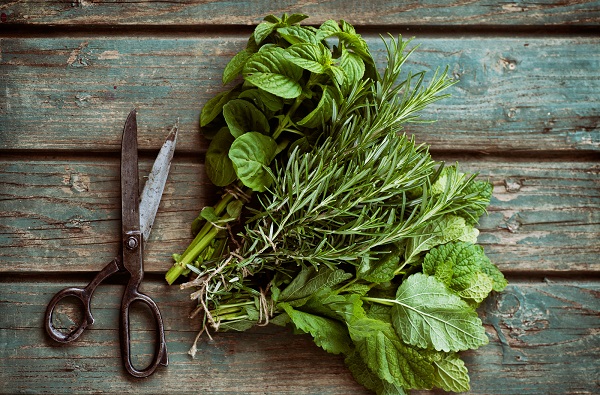Vegetables and Herbs for the California Drought
 The drought is big news in California. Many people who garden, or who would like to start gardening, wonder if growing vegetables and herbs is a good idea in the California drought.
The drought is big news in California. Many people who garden, or who would like to start gardening, wonder if growing vegetables and herbs is a good idea in the California drought.
While all vegetables and most herbs need more water than drought tolerant landscape plants. There are some choices, and growing methods, that are better for drought conditions than others.
California Drought Tolerant Herbs
When it comes to herbs, there are many choices that require infrequent watering. Most Mediterranean herbs do well in California. All of the following culinary herbs are happy with minimal water:
- Rosemary
- Oregano
- Thyme
- Sage
- Marjoram
These herbs also can be grown in pots and planter boxes. This way, the water is restricted from seeping into the surrounding ground. Bury the pots in the ground, or insulate the containers on the outside with straw bales where the sun is hottest. This can help the plants use less water while preventing the containers from getting too hot above ground.
When you do apply water after the soil surface has dried out, water deeply and completely. Give more water to larger, established plants. Watering early in the morning, late afternoon, and at night also help prevent evaporation.
Vegetables for the California Drought
As with herbs, vegetables that do best in drought conditions require infrequent, but deep watering. If you want to grow vegetables that need the surface to stay moist and humid like lettuce, many peppers, cucumbers, basil, and chard. Consider using a row tunnel, or extra mulch, to keep in moisture and keep humidity up.
Vegetables that thrive with deep, less frequent watering include:
Tomatoes: Tomatoes are the most frequently home-grown vegetable crop. And happily, they are fairly drought tolerant. They naturally do best when the first two inches of soil becomes dry. Followed by a deep watering.
Melons: Melons do well planted in mounds with a hollow at the center used for watering. Humidity and moisture on their leaves often leads to mold. They are also naturally more drought resistant.
Potatoes: This crop is easy to grow, especially in containers. They prefer planting in winter or spring when rain is still most likely. Then, they are ready for harvest before the hottest months of summer.
Summer and winter squash: Like melons, these vegetables also grow well in mounds. Where water can be concentrated a few times a week, or as needed, depending on conditions.
Other Ways to Beat California Drought When Gardening
Using straw, compost, or agro-fabrics to mulch around plants reduces evaporation. Many mulch materials are inexpensive, or even free. If they are organic, they will break down and add texture and some nutrients to the soil over time.
Using timers and an automated irrigation system also helps you get the right amount of water at the best time of day or night. Working with a landscape contractor can help you set up an herb or vegetable garden. They will help you keep your gardening through the California drought.
Looking for more gardening tips during California drought? Call 805-773-5395

